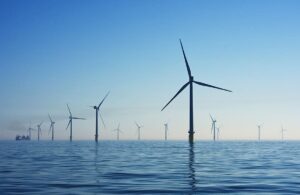The offshore wind industry is suffering a runaway cost crisis, but Dominion Energy says the cost of its monster project will not go up. Apparently, there is not even a risk of it going up. This preposterous claim is worth exploring.
On the crisis side, I recently wrote about it in general terms. See my https://www.cfact.org/2023/07/26/offshore-wind-has-a-cost-crisis/.
The financial magazine Barron’s has done some work on this crisis situation. Here is a telling quote from a recent article:
But behind the scenes, the news about wind power is more sobering. Financially, the industry is teetering, with a parade of companies planning to renegotiate or pull out of contracts, jeopardizing plans for projects that were expected to provide electricity for millions of homes. Inflation is erasing profits, causing some of the largest energy firms in the world to back away. “Returns on offshore wind are becoming more and more challenged,” Shell CEO Wael Sawan told Barron’s last month, just days after a Shell joint venture said it would pull out of a power contract in Massachusetts. Shell won’t build renewable projects that can’t earn initial returns of 6% to 8%, he said.
At least eight multinational companies in three states have quietly started to back out of wind contracts or ask to renegotiate deals in ways that will pass more costs to consumers. Beyond Shell (ticker: SHEL), they include BP (BP), Denmark’s Orsted(DNNGY), Norway’s Equinor (EQNR), Spain’s Iberdrola (IBDRY), Portugal’s Energias de Portugal (EDPFY), and France’s Engie (ENGIY) and state-owned Électricité de France. The projects those companies are building will collectively cost tens of billions of dollars to construct and connect to the grid. The cost problems they’re facing make offshore wind a dicey investment proposition today, with the potential for substantial write-downs ahead.
https://www.barrons.com/articles/offshore-wind-power-energy-costs-24a9b387
“Financially, the industry is teetering” has an ominous ring to it. This is truly serious for the companies involved in offshore wind, especially the developers.
Dominion Energy is developing one of the biggest American offshore wind projects, a 2,600 MW monster. It will lie out from Norfolk Naval Base (the world’s largest), and Virginia Beach, the state’s biggest city.
Dominion has estimated the project cost at just under $10 billion. One would expect the cost crisis to increase this substantially. In fact, the cost increase typically cited by other industry players is a whopping 40%.
But in Dominion’s latest 6-month status report, submitted just this May, they amazingly predict no cost increase at all. This astounding prediction is then repeated in a July submission (or basically right now), which incorporates the May report by reference.
There is no public discussion of risk in the May status submission. There may be some admission of risk, but most of that submission is kept secret.
Here is how veteran Dominion watcher Steve Haner reported this strange secrecy in the great Virginia-focused blog Bacon’s Rebellion:
Dominion Energy Virginia’s first wave of offshore wind remains on schedule, and within the announced capital cost of $9.8 billion; and the cost per unit of the energy from the turbines will be lower than initially projected, the utility reported last week.
Details? Well, many of those are secrets. Much of the brief report the utility filed with State Corporation Commission remains redacted, with large blocks covered by black ink. The redacted data involves reports from an affiliate corporation, Blue Ocean Energy Marine LLC. There apparently is also another document ‘filed under seal under separate cover.’
Finally, Dominion refers to an Excel file that includes all the data on the new levelized cost of energy (LCOE) calculations which was posted to a shared eRoom. The password is available only to the SCC and case parties who signed non-disclosure agreements, reports the SCC’s communications director in response to a query about access for Bacon’s Rebellion.


Leave a Reply
You must be logged in to post a comment.